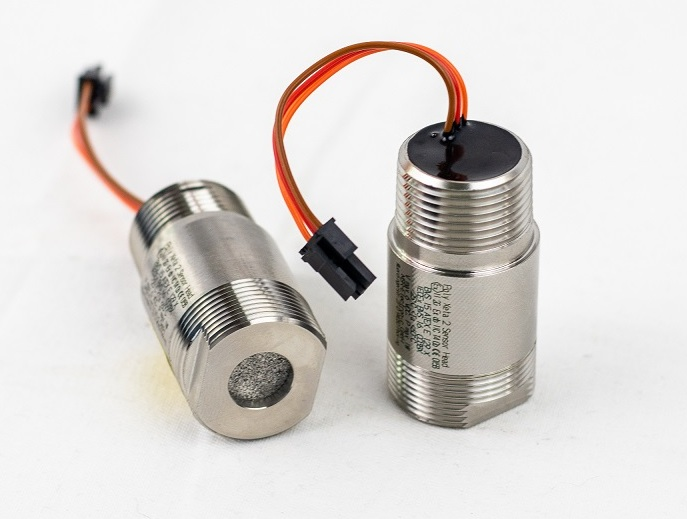The Wolfenbüttel wastewater treatment plant is responsible for the purification of approx. 3.2 million m3 of wastewater. In order to treat and purify the wastewater, the ingredients must be removed and separated from the water. For this purpose, there are sewage treatment plants that work with mechanical, biological and chemical processes.
 Fixed gas warning systems: PolyXeta®2 - The innovative X-Change sensor from MSR-Electronic. Image Credit: MSR Electronic GmbH
Fixed gas warning systems: PolyXeta®2 - The innovative X-Change sensor from MSR-Electronic. Image Credit: MSR Electronic GmbH
During cleaning process, digester gas is produced - a mixture of mostly combustible gases with Methane gas CH4 accounting for the largest proportion of it. Digester gas is to be expected to occur in all sewer networks. The PolyXeta®2 sensors from MSR-Electronic not only reliably monitor the sewage treatment plant but also protect people in these areas against dangerous gas concentrations.
In the accident prevention regulation for “Wastewater facilities", the safety measures against the effects of hazardous gases are a central point. Fortunately, accidents caused by gases happen relatively rarely in sewerage systems. However, in case such accidents do occur, several people are usually seriously or even fatally injured.
In order to achieve the highest possible level of gas monitoring, the PolyXeta®2 sensors are polled by a stationary gas warning system directly via a PLC safety controller.
Innovative exchangeable sensor X-Change
After remote calibration of the highly robust PolyXeta®2 sensors from MSR-Electronic, a precise and stable methane content in the air can be displayed. The measuring method with integrated temperature and drift compensation stands for highest accuracy and reliability combined with long sensor life. The sensor has a standard 4-20 mA analog output and two relays with adjustable switching thresholds. In the event of a leakage, it is thus possible to warn against the emergence of a flammable gas concentration and to initiate countermeasures in parallel. In this case, installation and maintenance of the gas alarm system in the sewage treatment plant are carried out by our partner Gawado Gaswarnsysteme.
Take a look at the simple exchange process in the video here:
How is digester gas produced in biological purification?
Bacteria and other microorganisms can decompose organic substances when supplying oxygen. This decomposition takes place in the "aeration tank", where fresh oxygen is constantly supplied by aeration. In the "secondary settling tank" the sludge produced is separated from the wastewater by settling. This sludge must now be removed and treated further on. It is thickened and pumped into a digestion tower, in which bacteria cause further decomposition by reducing oxygen. This produces combustible methane gas.
With the products of MSR-Electronic you work preventively against dangers.
In addition to state-of-the-art technology, MSR-Electronic also offers consulting and analyses to perfect the safety of your systems, e.g. leakages are localized at an early stage.